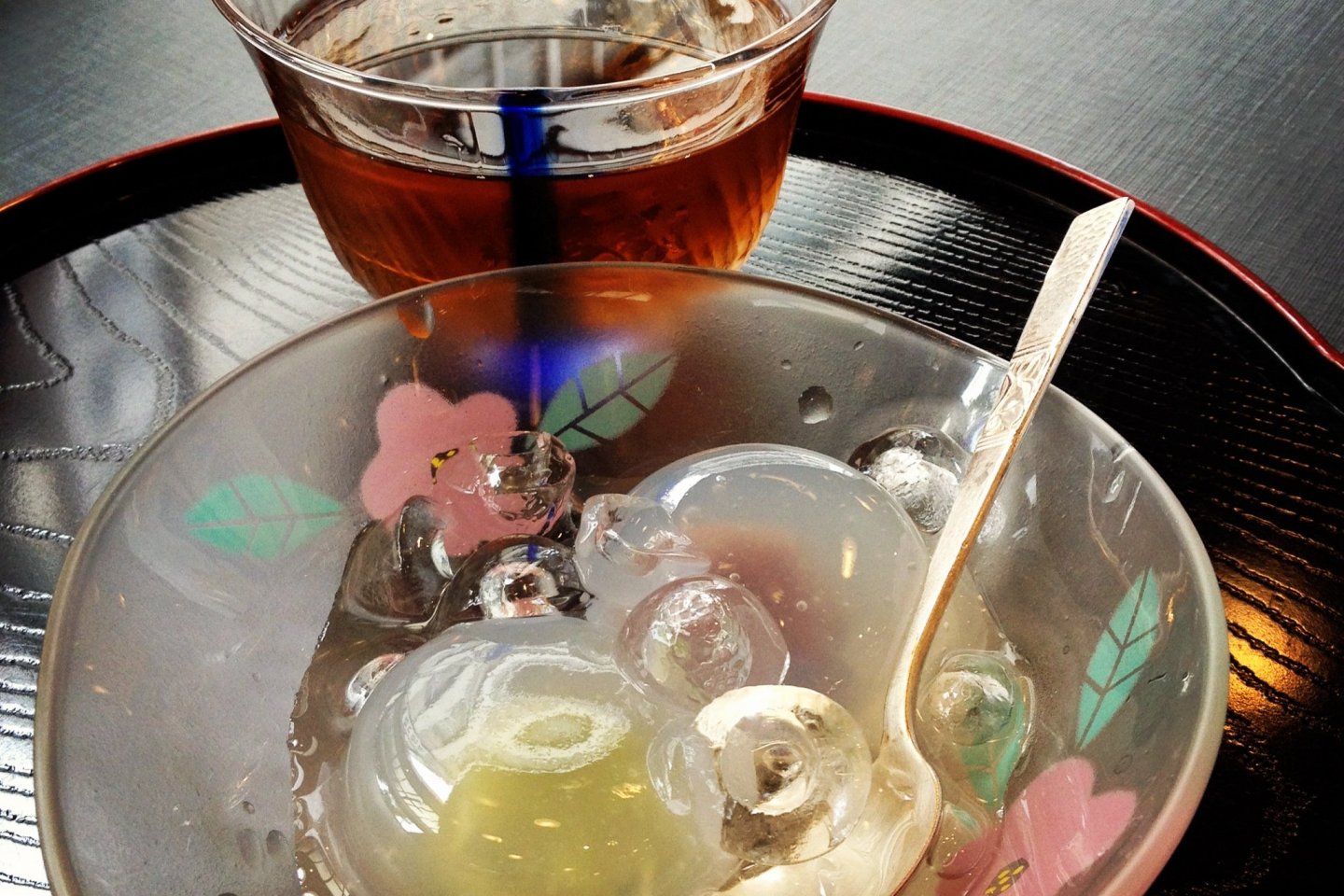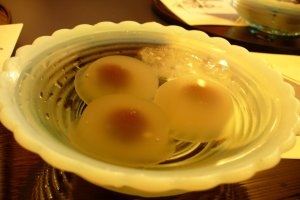You've got to give credit to Japan. With much of the world's foods squarely centred on satisfying taste buds and filling the belly, Japan managed to sneak past everyone else to see its traditional cuisine listed as one of the world's intangible heritages.
Why? Well, according to Japanese culinary rules, it's not enough to appeal only to the palate. Traditional Japanese cuisine insists on feeding all of the senses.
This is quite apparent when you consider traditional Japanese wagashi sweets come summer. It's a sweltering time of the year with a never ending humidity that easily saps the appetite. Yet traditional confectionery makers embraced summer with a solution that elegantly puts into practice the nation's culinary wisdom. To put it simply, if it looks cool, you will feel cool.
Kingyoku-kan (kohakukan in the Kansai region) sweets make full use of this concept. Made from translucent jelly-like agar, confectionery makers worked on creating scenes of summer using ingredients like red beans imbedded inside the gel. Common motifs include fish, starry night, streams and leaves.

Another summer sweet is mizumanju. Traditionally made with red bean paste wrapped in a clear kuzu root starch, mizumanju originated in Ogaki at the end of the Edo period. Famed for the quality of its water, Ogaki became well known for the light and refreshing hints of coolness in its mizumanju. These days, red bean paste has been joined by fruits and macha pastes as wagashi artisans continue to work on creating newer and fresher tastes and sensations.

Much of the Japanese summer wagashi you will find is a variation of the above themes. Besides the quality of ingredients used, what separates the good from the great is the style and presentation. Attention to detail is a key element. The resulting variety can be staggering as each store comes up with its own unique contribution to wagashi summer design.
Conveying a sense of coolness, summer wagashi are true expressions of the belief that a person eats with their eyes before they eat with their mouth.






























